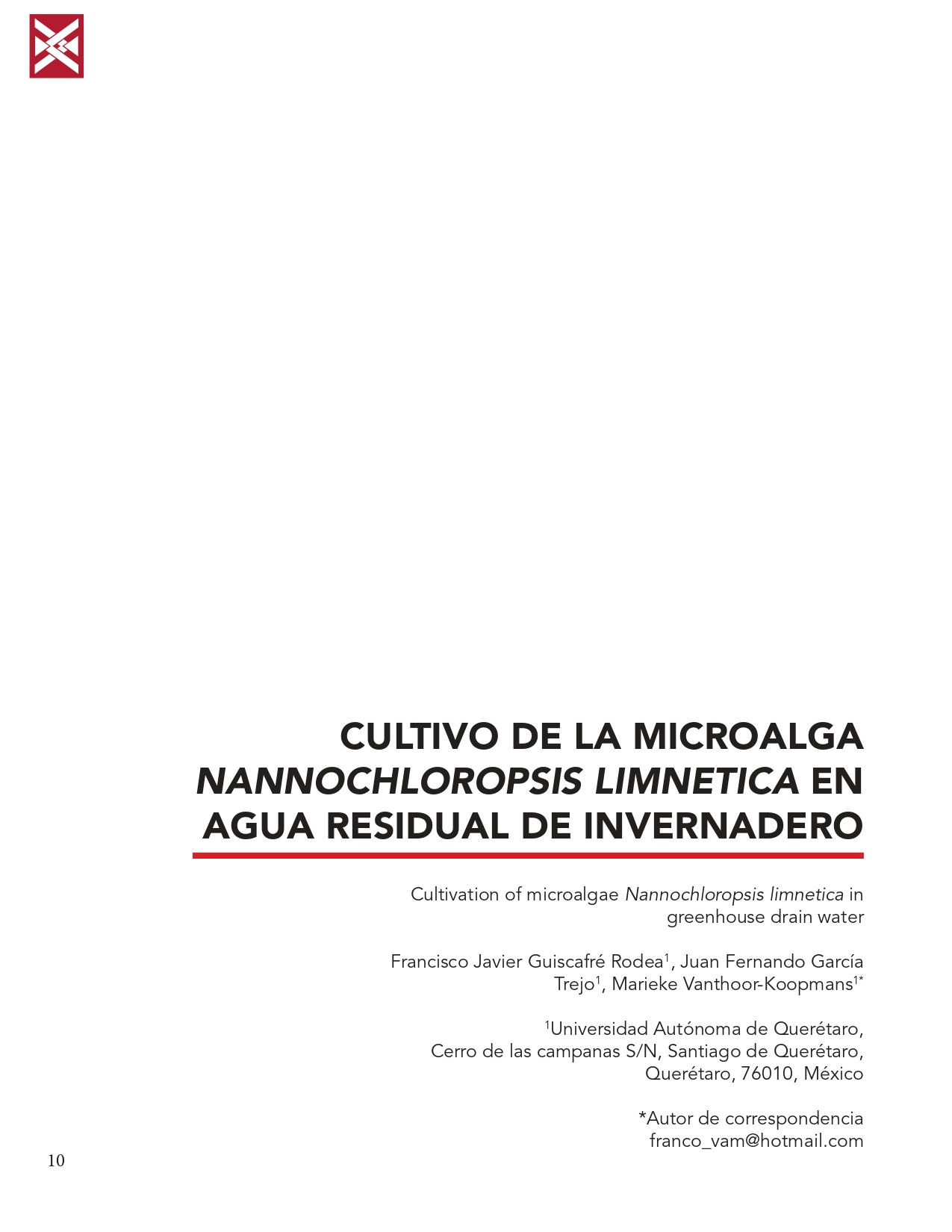Abstract
The microalgae Nannochloropsis limnetica is the only species of its genus that is freshwater and has
the peculiarity of containing a high content of Eicosapentaenoic acid (EPA), which is a polyunsaturated fatty acid. EPA fatty acids have shown to have major impact on cardiovascular diseases, inflammatory diseases, brain function and mental health, which gives them a high economic value. The objective of the present investigation was to evaluate the feasibility of cultivating N. limnetica in wastewater from a hydroponic greenhouse of tomato production, in order to reduce production costs. At the end of the research, it was verified that this microalgae can be cultivated in greenhouse wastewater, obtaining even better results than a commercial medium (BG11) known to be efficient in the cultivation of freshwater microalgae. In addition, it was verified that microalgae can
grow in the wastewater throughout the year of the horticultural production of the greenhouse.

This work is licensed under a Creative Commons Attribution-NonCommercial 4.0 International License.

